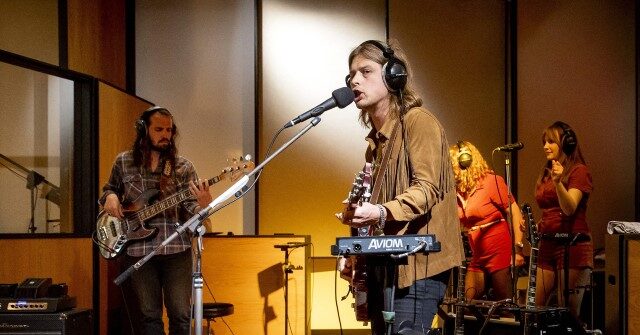A recent study by the International Confederation of Societies of Authors and Composers (CISAC) has issued a stark warning about the impact of artificial intelligence (AI) on the music industry, predicting that recording artists could face a staggering 24 percent drop in their income by 2028. This disruption in the industry is attributed to the growing dominance of generative AI music, which is expected to claim a significant share of revenue from traditional music streaming platforms and libraries. While technology companies may thrive financially from these advancements, the artists themselves suffer as their revenue streams dwindle, raising urgent concerns about the need for regulatory interventions to protect creative professionals.
The integration of AI into the music sector is indicative of broader trends in the entertainment industry, where cost-saving measures are increasingly attractive to corporate entities. Executives are drawn to AI’s promise of efficiency and reduced labor costs, potentially putting numerous creative jobs at risk as machines begin to take over roles traditionally performed by humans. Labor unions, like SAG-AFTRA and the Writers Guild of America, have expressed their apprehension regarding this encroachment, advocating for protective measures that ensure creative jobs remain secure in the face of technological advancement. The prospects for many creative workers appear grim, as a shift towards automation could lead to job losses and diminishing opportunities within the industry.
The backdrop of these concerns is accentuated by the labor disputes within Hollywood that erupted recently, characterized by actors and writers going on strike to demand protections against AI. These strikes resulted in a historic cessation of production that highlighted the mounting tensions between labor interests and technological advancements. As studios grapple with the financial implications of labor actions, the pressure to adopt AI as a means of operational efficiency grows. This precarious situation prompted guilds to negotiate protections, leading to some measures being put in place to shield their members from AI exploitation in the creative process.
The aftermath of the strikes yielded claims from SAG-AFTRA of significant victories regarding AI protections for actors, yet skepticism persists over how robust these protections truly are. Critics argue that the measures established may leave artists vulnerable to circumvention by studios, who could explore loopholes to exploit AI. The improvements in working conditions and job security that the unions fought for are, therefore, viewed with caution, with many creatives concerned that studios may continue to prioritize technological efficiencies over human talent.
Additionally, the Writers Guild of America reported gains in negotiations that required studios to disclose AI-generated materials and prohibited studios from mandating writers to use AI or giving AI credit in productions. While these developments may appear to offer some safeguards, ambiguities remain. Many writers have started to leverage AI tools like ChatGPT in their workflow, blurring the lines of compliance and raising the question of how studios might exploit these gray areas to their advantage. This evolving dynamic encapsulates the struggle between creative innovation and the risk of devaluing artistic contributions through reliance on machine-generated content.
In summary, the looming potential for AI to disrupt the music and entertainment industries raises pressing questions about the future of creative work. The CISAC study underscores the urgency for comprehensive regulatory measures to preserve artist incomes in an era increasingly dominated by technology. As the entertainment landscape continues to adapt to these rapid changes, the response from industry stakeholders—artists, unions, and studios—will shape the future viability of creative professions against the backdrop of advancing AI. Without vigilant action and clear regulatory frameworks, the risk of financial upheaval and job losses for artists becomes alarmingly real, challenging the essence of human creativity in a technology-driven world.

